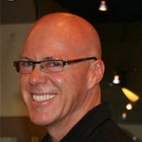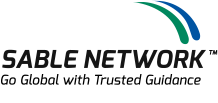Advancements & Achievements« Back to Advancements & Achievements Listings

SABLE Maps Ways to Increase South Africa's Life Science Competitiveness
Dr. Stephen Bell, Managing Partner of The SABLE Accelerator Life Science Practice, Offers His Perspectives.
By Rowan Philp, Chief International Correspondent for the Sunday Times (South Africa)
Mastering the entire lifecycle of the products which end up in the world’s medicine cabinets is like being a rocket scientist who pilots his own space rockets; personally invents safer fuels and capsule parachutes; forges new rules for space technology development with NASA; launches commercial rocket parts companies; and lobbies for new treaties with the Unites Nations’ space directorate in Vienna.
The SABLE Accelerator’s managing partner Dr. Stephen Bell has uniquely acquired precisely that level of hyper-diverse mastery in the global life sciences industry, from the lab to the mergers boardroom to the inner halls of government regulators. Bell is Trustee for the U.S. Federal Trade Commission and is the point man that oversaw the massive anti-trust product divestment from Pfizer following its $68 billion acquisition of Wyeth in 2009.
Before that, he was leader of America’s largest bird flu vaccine project, tasked with being able to manufacture 150 million vaccination doses in six months. This followed the co-founding of another company, BioSante, which was built from University of California–Los Angeles patents. The latter served as the basis for Bell to re-engineer and simplify the technology in the lab and apply for new and more expansive patents. The company went on to grow to a value of $300 million.
“In 2009, I was approached to judge South African bioscience and biotech business plans in a start-up company competition coordinated by Emory University,” says Bell. “I then realized what remarkable potential there was for innovators in South Africa, but also saw the frustrating gaps—why they didn’t have the continuum, adequate resources and support they needed to take things on to the global stage. South Africans are incredibly innovative, yet they are very underrepresented in the global market at the moment. This is where I see significant potential for SABLE to help facilitate that growth.”
Raised in Port Elizabeth and initially trained at Rhodes University, Bell is leading the launch of the SABLE Accelerator’s Life Science Initiative. With it, he hopes to become a midwife to South African biotech start-ups with global impact.
With the right intellectual property, business plan, regulatory compliance roadmap, capital support and global networks, he says small South African companies can bag a handsome fraction of the world’s trillion-dollar life science market while improving or saving lives in the process. Without any one of these things, devices as clever at the CT scan or drugs as good as Lipitor would likely never leave South Africa’s shores or even the R&D lab.
In an interview, Bell said SABLE’s LSI strategy to empower South African life science entrepreneurs and their products to compete on the world stage would include:
- An audit of product ideas in South Africa: “Our primary initiative is to do a deep dive in South Africa, sitting alongside their innovators, entrepreneurs, government officials and financiers to look at what they have; help them package what they have, and select those things which have the potential to be viable propositions and should be driven toward commercialization.” Bell said the GAP Biosciences Business Plan Competition—co-sponsored by Emory University in the U.S. and South Africa’s Innovation Hub—for which he was a judge would serve as just one of a number of rich research tools for the overview.
- A parallel audit of industry resources: “I’m in discussions with the CSIR to potentially become an entrepreneur-in-residence to meet with and understand the motivations and innovative ideas of their lead scientists; to look at their intellectual property, facilities, ongoing initiatives and capabilities; and to provide the long-term guidance and support to gain international visibility and form spin-out start-ups while assessing resources in the private sector for public-private partnerships.”
- A strategic awareness program: “It may not only be about getting to market quickly in South Africa. The fundamental concept needs to be: act locally; think globally. To capitalize on future global growth opportunities, innovators need to seriously consider developing their lead products in compliance with the global standards set by the FDA and European regulators right from the start.”
- Building LSI around three activity pillars: These would include commercialization (from due diligence to value-added product incubation and potentially all the way to IPOs or other exit options), investment and philanthropy.
- Direct assistance to the global network of South Africa’s existing life science entrepreneurs through SABLE: “We plan to help set them up with partners; help them with intellectual property; raise capital; transfer technology; help them with regulatory standard compliance; and much more. On the commercial front, SABLE LSI will incubate, build on and add value to new technologies and ventures, thus maximizing ROI in the shortest time possible.”
- Direct assistance to aspiring entrepreneurs: “SABLE LSI will initiate first contacts, introductions, networking, market research, business plan composition, product candidate identification, due diligence, legal support, product incubation and commercialization.”
Nick Allen, founder of Savant Analytics, a small life science tech incubator in Cape Town, says he hopes SABLE’s LSI will “help wean South Africans off their perfectionism habit with product development and focus them more on market research, partnerships and workable business plans.”
Bell’s co-founding of BioSante in 1997 provides a case study in proving Allen’s point. Bell was approached by a consultant to identify and commercialize biomedical products that were covered by a series of nine international patents arising from sponsored research made possible by angel investors. Bell’s research indicated that any products that might emerge from the patents as they existed then could face regulatory safety challenges in the course of development.
Therefore, he personally went back to being a hands-on lab scientist, re-invented the technologies and filed new patent applications to cover biocompatible and biodegradable nanoparticles for vaccine and therapeutic drug delivery. These potential products were designed to give significant competitive advantage to the developers. The challenge, though, was the relative shortage of capital to advance development swiftly and thus remain competitive with the potential big pharma customers who needed and were also developing similar technologies.
Bell then recruited a pivotal team of scientists, generated business plans to define the product development and commercialization strategies, and designed and built R&D facilities in accordance with Good Manufacturing Practice (GMP as defined by the Food and Drug Administration) to include state-of-the-art pilot production equipment. Based on this solid foundation, which served as the launch pad from which BioSante would grow, the initiative went on to attain a market cap of close to $300 million in nine years.
“We were the small fry but had big ideas,” Bell said. “Accordingly, we built our product portfolio to add value to developing as well as marketed products, providing opportunities to extend patent life of the partners’ mature products or to provide a competitive advantage for products in development. To this end, we entered into more than 75 multi-national partner-funded partnerships, out of which came massive R&D cost savings and access to world-class teams of scientists who then provided independent verification of our internal proof-of-concept findings, options to license the technology and shared costs for new patent applications.”
Bell admits to having made full use of his professional contacts to the hilt to steer BioSante through the lean early years. What also helped reduce early start-up costs was their association with Lou Sullivan, former Secretary of Health under President George Bush Sr., who became chairman of the burgeoning company after it went public. Bell not only exploited Sullivan’s powerful contact network, but also reduced overhead by leasing research space at an Atlanta medical school founded by Sullivan. “The idea was to share facilities at Morehouse and have close access to Dr. Sullivan and his connections—that’s why we started the company there.”
Describing the launch, he says, “I was literally handed the pile of international patents, along with a chunk of change which had been raised from private investors out of Capital Hill, partly driven by interest in AIDS vaccine development,” he recalls. “I had done a lot of work on HIV/AIDS and had completed a PhD with a leading Australian group, so it was a natural fit.
“Working with UCLA, the owners of the IP that emerged from the sponsored-research, we re-negotiated and re-defined the license rights to those patents. Proceeding with the necessary due diligence on that package, we soon realized that a lot of the claims in those patents did not have applications for human usage because the candidate nanoparticles were made of heavy metals, which were not biodegradable.
“So I put on my lab coat once again and essentially reinvented and simplified the technology, reducing the manufacturing from a dangerous and labor-intensive 40-step process down to a simple four-step, room-temperature, bench-top method that was consistent and reproducible.
“We then proceeded to file new patent applications, drafted supporting business and product development plans, and pursued the development of three lead products based on our proprietary nanoparticle platform: two needle-free nanoparticle-vectored vaccine candidates and an inhaled nanoparticle-drug delivery system with the inhaled insulin product candidate.”
Fast-forward to today, Bell says that “to complement the SABLE vision, the LSI has been structured primarily to tap into the cumulative wealth of knowledge and worldly experience of expatriate life scientists that wish to identify with and contribute back to SA, yet still allow individual members to pursue their respective current and future growth initiatives as they may desire.”
Further, through SABLE’s elite members, South African entrepreneurs have a ready-made network geared to share resources and knowledge in a similar fashion.
Bio
Rowan Philp served as Chief Reporter and Foreign Correspondent for the Sunday Times in South Africa for most of the past decade—a period broken by stints at the Washington Post as Deputy News Editor; a Harvard/MIT fellowship; and two years as London Bureau Chief. Previously, he was based in Boston and served as the North American correspondent for the Sunday Times and Mail & Guardian, reporting on South African expatriates and diplomats, as well science and innovation. He isa currently chief reporter in South Africa for The Witness daily newspaper of KwaZulu-Natal and Media24.

